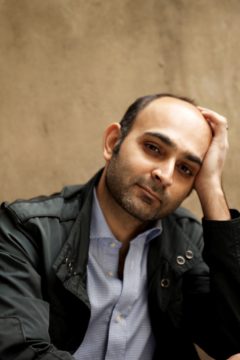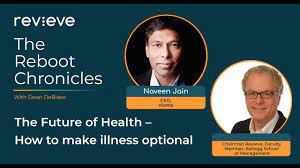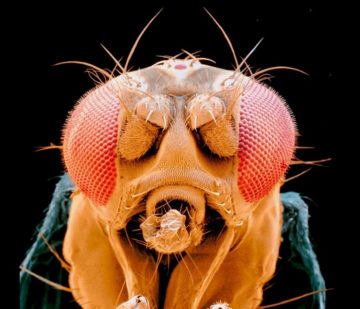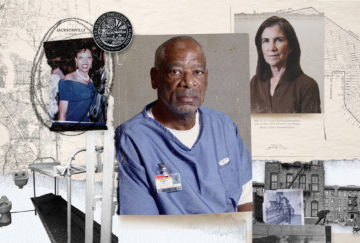Month: March 2023
Propaganda (Almost) Never Works: Notes on Russian interference attempts
Hugo Mercier in Persuasion:
 After Donald Trump won the 2016 presidential election there was widespread suspicion that the results had been influenced by a Russian operation. The Internet Research Agency, a “troll factory” operating out of St Petersburg, was creating accounts posing as U.S. citizens or news agencies, posting thousands upon thousands of messages, the majority in support of Trump, and many fake. Could the Russians have pulled off something as big as swaying a U.S. election?
After Donald Trump won the 2016 presidential election there was widespread suspicion that the results had been influenced by a Russian operation. The Internet Research Agency, a “troll factory” operating out of St Petersburg, was creating accounts posing as U.S. citizens or news agencies, posting thousands upon thousands of messages, the majority in support of Trump, and many fake. Could the Russians have pulled off something as big as swaying a U.S. election?
The answer has recently been confirmed: No. In January this year, a study by Gregory Eady, Tom Paskhalis, and their colleagues found that the majority (70%) of this Russian propaganda was consumed by only 1% of Twitter users, people who were already staunch Republicans and thus already overwhelmingly likely to vote for Trump. As a result, the fake news shared by the trolls merely preached to the choir. It doesn’t seem to have changed anyone’s mind.
More here.
Within you without you
More here.
Why AlphaFold won’t revolutionise drug discovery
Derek Lowe in Chemistry World:
 DeepMind’s AlphaFold team has been having quite a run of success in predicting protein structures. This has long been considered one of the truly difficult problems in computational biology, and AlphaFold has made extraordinary progress over the last year or two. This has culminated in the recent release of predicted structures for the great majority of the human proteome, which is the sort of thing that, ten years ago, would have sounded like the opening of a science fiction story.
DeepMind’s AlphaFold team has been having quite a run of success in predicting protein structures. This has long been considered one of the truly difficult problems in computational biology, and AlphaFold has made extraordinary progress over the last year or two. This has culminated in the recent release of predicted structures for the great majority of the human proteome, which is the sort of thing that, ten years ago, would have sounded like the opening of a science fiction story.
I have no desire to take anything away from this success. It really is impressive. But some of the headlines have betrayed real misunderstandings about what’s been accomplished. First off, as I wrote here earlier this year, we have not made sudden huge leaps in understanding why proteins fold like they do. The AlphaFold people have made great progress in recognising different known protein folding motifs and assembling them into structures that are very often correct. Forming these coils, loops, and sheets is what proteins generally do, but ‘why?’ doesn’t enter into it. If we’d waited for an answer at that level, we’d be waiting for many more years.
More here.
Thursday Poem
Bird Psalm
The Swallow said,
He comes like me,
Longed for; unexpectedly.
The superficial eye
Will pass him by,
Said the Wren.
The best singer ever heard.
No one will take much notice,
Said the Blackbird.
The Owl said,
He is who, who is he
Who enters the heart as soft
As my soundless wings, as me.
by U.A. Fanthorp
from The National Poetry Library
Honoring Felix Hernandez—The Maestro Of The Groove
Dominic Preziosi at Commonweal:
 “Good morning, my soul-licious listeners” is how Felix Hernandez recently greeted his Saturday-morning audience, the many thousands who tune in for his long-running Rhythm Revue show, which airs and streams on WBGO, Newark’s public-radio outlet. I’ve counted myself among them since early 1995, when my boss on the copy desk of the magazine I worked at informed me of the show’s existence. Nearing what then seemed to me the wise old age of forty, he possessed an edgy wit and encyclopedic knowledge of mid-century American jazz and soul, his headlines sometimes containing sly references to Charlie Parker or Wilson Pickett. On Mondays he would grill me about what I’d heard on Rhythm Revue that weekend, and, clearly more important, what I’d liked. Bill Withers’s “Lovely Day” or Al Green’s “I Can’t Get Next to You”? Aretha Franklin’s “Think” or Little Sister’s “You’re the One”? Pickett’s version of “You Keep Me Hangin’ On,” or The Supremes’—and why? It was like a test I had to pass to gain his trust, which I think I did, eventually. When I told him a few months later that I’d received the special three-CD Rhythm Revue compilation for giving money during WBGO’s spring pledge drive, he reacted as if I’d been saved from perdition.
“Good morning, my soul-licious listeners” is how Felix Hernandez recently greeted his Saturday-morning audience, the many thousands who tune in for his long-running Rhythm Revue show, which airs and streams on WBGO, Newark’s public-radio outlet. I’ve counted myself among them since early 1995, when my boss on the copy desk of the magazine I worked at informed me of the show’s existence. Nearing what then seemed to me the wise old age of forty, he possessed an edgy wit and encyclopedic knowledge of mid-century American jazz and soul, his headlines sometimes containing sly references to Charlie Parker or Wilson Pickett. On Mondays he would grill me about what I’d heard on Rhythm Revue that weekend, and, clearly more important, what I’d liked. Bill Withers’s “Lovely Day” or Al Green’s “I Can’t Get Next to You”? Aretha Franklin’s “Think” or Little Sister’s “You’re the One”? Pickett’s version of “You Keep Me Hangin’ On,” or The Supremes’—and why? It was like a test I had to pass to gain his trust, which I think I did, eventually. When I told him a few months later that I’d received the special three-CD Rhythm Revue compilation for giving money during WBGO’s spring pledge drive, he reacted as if I’d been saved from perdition.
more here.
Atelier 17 and the Birth of Abstract Expressionism
Dominic Green at Literary Review:
 The accelerated uptake of Surrealism in America followed the accelerated intake of Surrealist artists. By 1941, the arrival in New York City of émigrés like André Masson, Salvador Dalí, Max Ernst and the ‘Pope of Surrealism’ himself, André Breton, was precipitating what Darwent calls ‘one of the greatest cultural exchanges in modern history’. The full story is in Martica Sawin’s Surrealism in Exile and the Beginning of the New York School. Darwent’s book examines an often-overlooked channel of transmission, Atelier 17, and its founder, the English printer, painter and teacher Stanley William Hayter.
The accelerated uptake of Surrealism in America followed the accelerated intake of Surrealist artists. By 1941, the arrival in New York City of émigrés like André Masson, Salvador Dalí, Max Ernst and the ‘Pope of Surrealism’ himself, André Breton, was precipitating what Darwent calls ‘one of the greatest cultural exchanges in modern history’. The full story is in Martica Sawin’s Surrealism in Exile and the Beginning of the New York School. Darwent’s book examines an often-overlooked channel of transmission, Atelier 17, and its founder, the English printer, painter and teacher Stanley William Hayter.
Born in 1901, Hayter went to Paris in 1926 and set up the first Atelier 17 there the following year. He worked with Picasso, Miró and Kandinsky on their printmaking. He also developed, Darwent writes, ‘the quixotic idea’ of reviving the burin, an ‘engraving tool with a mushroom-like handle at one end and a sword-sharp edge at the other’ once used by Dürer and Doré.
more here.
Martha Argerich | Chopin: Piano Concerto No. 1 (1970)
Of Anders & Kreuzwendedich
Sander Pleij in the European Review of Books:

The opening scene of Mohsin Hamid’s The Last White Man riffs on Kafka’s Die Verwandlung (The Metamorphosis). Kafka’s first sentence:
Als Gregor Samsa eines Morgens aus unruhigen Träumen erwachte, fand er sich in seinem Bett zu einem ungeheueren Ungeziefer verwandelt.
So Gregor Samsa awakes in the morning, from troubled dreams, and finds himself transformed into a gigantic vermin. Hamid’s first sentence:
One morning Anders, a white man, woke up to find he had turned a deep and undeniable brown.
Hamid’s fairylike tale of a lover whose skin suddenly turns brown reminded me of another transformed lover, from a satire, written by an author who called himself Mynona. Der operierte Goy (The Operated Goy) was published exactly one hundred years before The Last White Man. The God of numbers is with us.
More here.
The future of weight loss
Stephan J. Guyenet at Works in Progress:
Heart attacks can be prevented with cholesterol and blood pressure drugs, bacterial infections can be eliminated with antibiotics, and even HIV is now treatable with antiviral drugs. But obesity remains a remarkably stubborn condition.
Losing weight is hard, with or without the help of a doctor. Two-thirds of American adults with obesity try to lose weight each year using every diet imaginable, yet the adult obesity rate remains at 43%. Even intensive diet and lifestyle interventions have historically struggled to exceed a sustained 5% loss of body weight, and most weight loss drugs are no more effective. Compounding the problem, primary care doctors often can’t deliver the best diet and lifestyle tools that are available. “I spent my career trying to get primary care providers to deliver effective weight loss interventions in their office,” says Donna Ryan, professor emerita at the Pennington Biomedical Institute and president of the World Obesity Federation. “It’s hopeless.”
Doctors understand the profound impact obesity has on their patients, and the remarkable benefits of even modest weight loss, but have historically been unable to do much about it.
That is changing.
More here.
Why I Am Not (As Much Of) An AI Doomer (As Some People)
Scott Alexander in Astral Codex Ten:
The average online debate about AI pits someone who thinks the risk is zero, versus someone who thinks it’s any other number. I agree these are the most important debates to have for now.
But within the community of concerned people, numbers vary all over the place:
- Scott Aaronson says says 2%
- Will MacAskill says 3%
- The median machine learning researcher on Katja Grace’s survey says 5 – 10%
- Paul Christiano says 10 – 20%
- The average person working in AI alignment thinks about 30%
- Top competitive forecaster Eli Lifland says 35%
- Holden Karnofsky, on a somewhat related question, gives 50%
- Eliezer Yudkowsky seems to think >90%
- As written this makes it look like everyone except Eliezer is <=50%, which isn’t true; I’m just having trouble thinking of other doomers who are both famous enough that you would have heard of them, and have publicly given a specific number.
I go back and forth more than I can really justify, but if you force me to give an estimate it’s probably around 33%; I think it’s very plausible that we die, but more likely that we survive (at least for a little while). Here’s my argument, and some reasons other people are more pessimistic.
More here.
GPT 4: Full Breakdown
Want To Live Longer? How Life Extension Industry Will Reboot Health, Wellness and The Economy
Dean DeBiase in Forbes:
 Do you want to live a better, healthier and longer life? Me too.
Do you want to live a better, healthier and longer life? Me too.
Lets go back to 1937, when Albert Szent-Györgyi won a Nobel Prize for his discovery of ascorbic acid—vitamin C—that enables the body to efficiently use carbohydrates, fats, and protein (I use it a lot during cold and flu season, you?). It was a massively consequential discovery, as it not only saved and extended countless lives, but it also contributed to the foundations of modern nutrition. Szent-Györgyi, himself, was blessed with a long life; he died in 1986 at the age of 93. But he might just as well be known for what he said on his 90th birthday: “I wish I could be 75 again!”
No doubt, that comment elicits more than a few eyerolls today. Especially since the CDC has recently downgraded American life expectancy to just 77 years. But could 75 someday be the new 40—an age by which, like Szent-Györgyi, we’re only hitting our stride? Well, if the burgeoning activity of the life extension industry is any indication, we may actually be on the cusp of making it so—and enjoying life to the fullest right up to the extended end. Which brings us to the morbid thought of mortality—that end state most of us seek to delay, if not dodge.
It may strike many as common sense that most causes of death are what we have come to understand as “age-related”: The longer we live, the more likely we are to develop, for example, heart disease, cancer, or Alzheimer’s. Therefore, a reasonable thing one can do to prevent the development of age-related diseases, is to, well, not age. It turns out that’s actually not as flippant as it sounds. So, is that possible and how do we get there?
More here.
The knowns — and known unknowns — of long Covid, explained
Dylan Scott in Vox:
 Three years since the beginning of the coronavirus pandemic in the US, the syndrome known as “long Covid” remains one of its chief mysteries.
Three years since the beginning of the coronavirus pandemic in the US, the syndrome known as “long Covid” remains one of its chief mysteries.
Those mysteries include what the syndrome even is. The long-term fatigue and brain fog some people report after recovering from an acute infection are the symptoms most commonly associated with long Covid, but more than 200 distinct symptoms have been reported. The novel coronavirus may also change people’s cardiovascular systems permanently in ways that could lead to long-term health problems, even strokes and heart attacks. Is it all long Covid? There are other elusive questions: How frequently do people get long Covid? Who is at the highest risk of developing it? And what is causing these long-term symptoms in the first place? The remaining uncertainties can mask the scientific progress of the past few years. Scientists have a better idea of how long Covid works, and why it might cause a wide array of seemingly unconnected symptoms.
But — and this is more important than it might seem — we know what we don’t know. We have a stronger sense of what the most important unanswered questions are and where there is genuine debate among even the experts about this bedeviling condition.
More here.
The Right to Grieve
Erik Baker in Jewish Currents:
 The truth is that American society has made persistent grief disabling, because the demands that grief makes on a person are at odds with the way that American capitalism expects people to comport themselves as workers. The normal worker, in our economic system, is a person whose ability to work is not impaired by grief—not someone who doesn’t experience loss, which would of course be impossible, but someone who simply doesn’t let it get to them. There is no statutory entitlement to bereavement leave in the United States, except in the state of Oregon. In fact, Department of Labor guidance on the Fair Labor Standards Act explicitly cites mourning as the example par excellence of unprotected non-work: Federal law “does not require payment for time not worked, including attending a funeral.”
The truth is that American society has made persistent grief disabling, because the demands that grief makes on a person are at odds with the way that American capitalism expects people to comport themselves as workers. The normal worker, in our economic system, is a person whose ability to work is not impaired by grief—not someone who doesn’t experience loss, which would of course be impossible, but someone who simply doesn’t let it get to them. There is no statutory entitlement to bereavement leave in the United States, except in the state of Oregon. In fact, Department of Labor guidance on the Fair Labor Standards Act explicitly cites mourning as the example par excellence of unprotected non-work: Federal law “does not require payment for time not worked, including attending a funeral.”
While the ideal worker under this regime is supposed to keep calm and carry on in the face of any loss, real workers experience grief all the time—in which case they must depend on the generosity of their bosses. Support is too often lacking.
More here.
Gigantic map of fly brain is a first for a complex animal
Miryam Naddaf in Nature:
 Scientists have generated the first complete map of the brain of a small insect, including all of its neurons and connecting synapses.
Scientists have generated the first complete map of the brain of a small insect, including all of its neurons and connecting synapses.
The research, published on 9 March in Science1, provides a brain-wiring diagram known as the connectome of a complex animal for the first time — the fruit fly Drosophila melanogaster. The map shows all 3,016 neurons and 548,000 synapses tightly packed in a young Drosophila’s brain, which is smaller than a poppy seed.
The map is a milestone in understanding how the brain processes the flow of sensory information and translates it into action.
More here.
Matt Taibbi addresses congress about the Twitter Files
The Mercy Workers
Maurice Chammah at The Marshall Project:
 The United States has inherited competing impulses: It’s “an eye for an eye,” but also “blessed are the merciful.” Some Americans believe that our criminal justice system — rife with excessively long sentences, appalling prison conditions and racial disparities — fails to make us safer. And yet, tell the story of a violent crime and a punishment that sounds insufficient, and you’re guaranteed to get eyerolls.
The United States has inherited competing impulses: It’s “an eye for an eye,” but also “blessed are the merciful.” Some Americans believe that our criminal justice system — rife with excessively long sentences, appalling prison conditions and racial disparities — fails to make us safer. And yet, tell the story of a violent crime and a punishment that sounds insufficient, and you’re guaranteed to get eyerolls.
In the midst of that impasse, I’ve come to see mitigation specialists like Baldwin as ambassadors from a future where we think more richly about violence. For the last few decades, they have documented the traumas, policy failures, family dynamics and individual choices that shape the lives of people who kill. Leaders in the field say it’s impossible to accurately count mitigation specialists — there is no formal license — but there may be fewer than 1,000. They’ve actively avoided media attention, and yet the stories they uncover occasionally emerge in Hollywood scripts and Supreme Court opinions. Over three decades, mitigation specialists have helped drive down death sentences from more than 300 annually in the mid-1990s to fewer than 30 in recent years.
More here.
This Changes Everything
Ezra Klein at the New York Times:
 In 2018, Sundar Pichai, the chief executive of Google — and not one of the tech executives known for overstatement — said, “A.I. is probably the most important thing humanity has ever worked on. I think of it as something more profound than electricity or fire.”
In 2018, Sundar Pichai, the chief executive of Google — and not one of the tech executives known for overstatement — said, “A.I. is probably the most important thing humanity has ever worked on. I think of it as something more profound than electricity or fire.”
Try to live, for a few minutes, in the possibility that he’s right. There is no more profound human bias than the expectation that tomorrow will be like today. It is a powerful heuristic tool because it is almost always correct. Tomorrow probably will be like today. Next year probably will be like this year. But cast your gaze 10 or 20 years out. Typically, that has been possible in human history. I don’t think it is now.
Artificial intelligence is a loose term, and I mean it loosely. I am describing not the soul of intelligence, but the texture of a world populated by ChatGPT-like programs that feel to us as though they were intelligent, and that shape or govern much of our lives.
more here.
4 Tests Reveal Bing AI ≈ 114 IQ
https://www.youtube.com/watch?v=xFvDJnf0GXs&ab_channel=AIExplained
